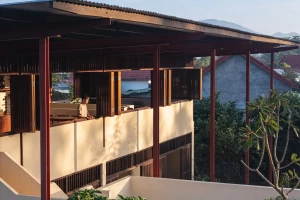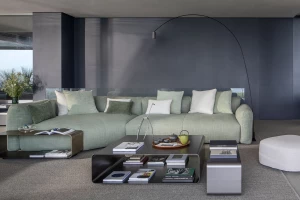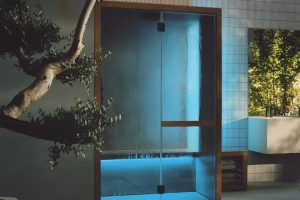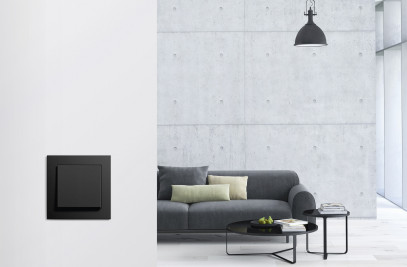In Sydney, the renovation and extension of the Totoro House by CplusC Architectural Workshop is inspired by Studio Ghibli’s animated fantasy film ‘My Neighbor Totoro.’ The film teaches the importance of relationships with family, friends and nature. The house is the embodiment of these concepts, both in its connection with the family and with the surrounding landscape.

The house can be categorised into three different zones: private quarters of the existing house, living space in the new extension and the courtyard/ garden. The existing house accommodates two bedrooms, a main bedroom with ensuite, a guest room and a bathroom. Although the existing house has been renovated to match the standard of the new extension, the existing layout was not significantly altered.

There was originally a disconnect between the house and rear yard due to the sloping nature of the site. The extension acts as a link, creating a gradual vertical transition between indoor and outdoor spaces that navigates from private bedrooms to the garden. Inside, boundaries are removed between living, dining and kitchen uses, resulting in one open plan space. The new build extends to an outdoor living area with cooking and seating areas, softening the threshold between the house and the courtyard.

The design draws from the Japanese concept of ‘Shakkei’ or ‘borrowed scenery.’ In particular, a circular feature window made of brass frames views of the backyard. Partly operable to allow for cross-ventilation, the window also acts as a seating element.
Existing materials were consciously reused to their full potential. This includes reusing the demolished sandstone foundations in the garden.

The architects have included a timber screen of Australian Hardwood to the eastern façade, providing shelter and separation while climbing plants offer a sense of privacy and security on the west side of the house, negating the need for traditional fencing.

The design supports the family’s sustainable lifestyle with the installation of a 3kW photovoltaic system and an 8000L rainwater tank to reduce the environmental impact of day-to-day life.































